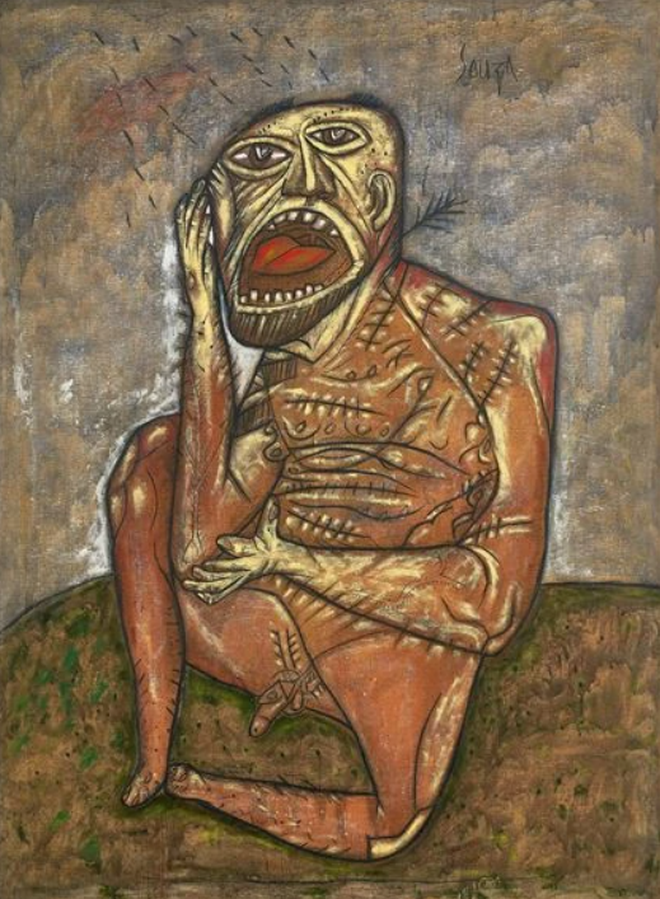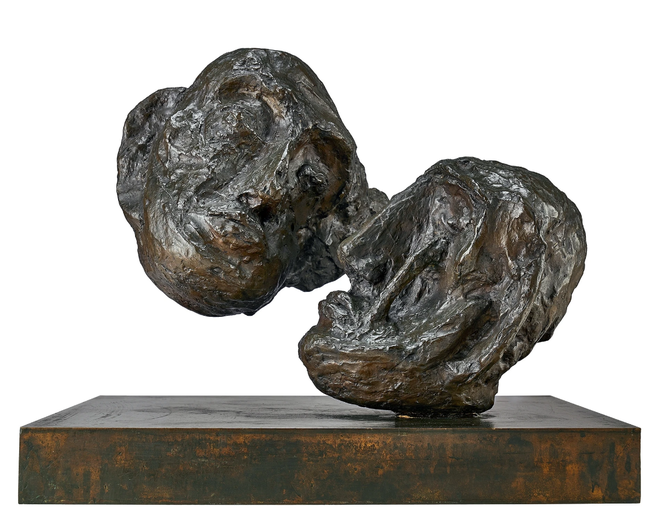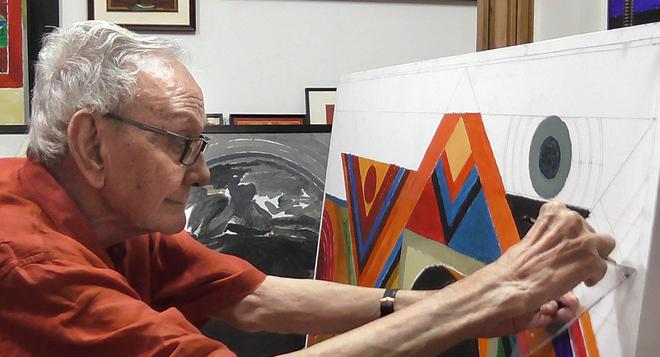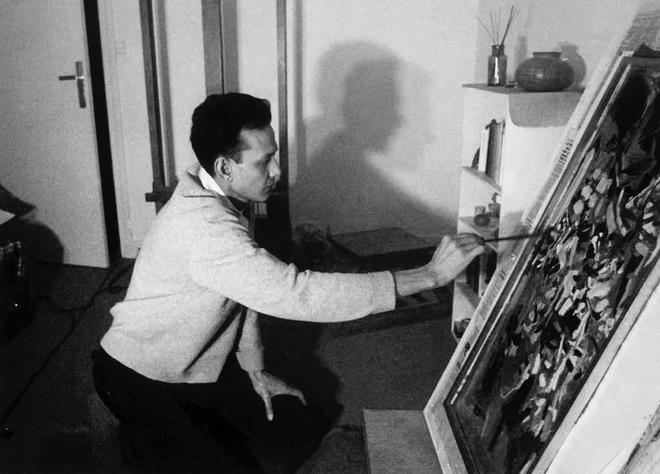Sayed Haider Raza has set a new record, seven years after he died. The Indian Modern artist’s acrylic on canvas Gestation (1989) fetched ₹51.75 crore, including commissions, at Pundole Auction House a little over a week ago, making it the most expensive Indian artwork ever sold at auction. (It broke Vasudeo S. Gaitonde’s 2020 record of ₹32 crore.) The painting showcases Raza’s signature Bindu in earthy colours.
The August 31 auction clocked a few other records for Moderns, too: F.N. Souza’s oil painting Hunger sold for ₹34.5 crore, setting a world auction record for the artist, and Tyeb Mehta’s bronze sculpture Two Heads fetched ₹14.95 crore, gaining the world auction record for a Modern Indian sculpture.


“Raza’s was the most substantial work at the auction. There were no Gaitondes, Ravi Varmas or Sher-Gils competing, which would have given Gestation a good challenge,” says Ashvin Rajagopalan, director of Mumbai’s Piramal Art Foundation and Chennai’s Ashvita’s. “Moreover, there’s been a big push in 2022-23, supported by several exhibitions, celebrating 100 years of Raza. This included shows at Kiran Nadar Museum of Art and Piramal Museum of Art, and earlier this year, The Centre Pompidou hosted the first solo of Raza in Paris. All this gave global visibility, and global collectors are now buying Raza. That’s why there’s been a major impact.” He adds that 2024 is 100 years of Souza, “so you will see momentum to his works.”
“The 80s was one of the most important decades of Raza’s oeuvre, and Gestation is an exceptional example of his geometrical works from the period. He focused on earth tones, which resonated with the forests of his birthplace in Madhya Pradesh.”Dinesh Vaziranico-founder - Saffronart
A quarter to remember
Art, be it within India or abroad, is now firmly accepted as an alternate asset class. “This has led to a steadily expanding buyer base at all levels of the market, and consistently strong prices for Indian artists from all periods of the 20th century,” says Khorshed Pundole, co-owner of the auction house, one of the oldest in the Mumbai art district. “What is also becoming clearer with each auction is that works that are fresh to the market, with impeccable and historically relevant provenance, command a substantial premium.”
This quarter could be the most value generating ever in the history of Indian art, believes Rajagopalan. “There was Pundole’s, and earlier AstaGuru did about ₹60 crore. On September 16, Saffronart is expected to do ₹125-₹130 crore in sales, and an upcoming Christie’s auction is pegged to do another ₹60-₹70 crore. The reasons are many, including a very robust Indian market [today we’ve touched $3.75 trillion GDP, and in that mathematics what is ₹300-₹400 crore!]. The money coming in is not being seen as a shock, but rather as the beginning of a small initiative to support art in India. There is room for thousands of crores to come in — in terms of people investing in, buying and supporting art.”

Does Raza deserve his own museum?

Meanwhile, Khorshed shares that over the last few auctions, the market is also widening and giving due recognition to post-independence artists, not just the Progressives. “It is inevitable that senior contemporary artists such as Atul Dodiya, Subodh Gupta, Bharti Kher, Jitish Kallat, and A. Balasubramaniam will reach the same critical acclaim as their Modern counterparts.”
Younger artists are in the spotlight too, with auctioneers seeing “huge interest from international institutions in the works of Ranjani Shettar [opening up at the Barbican Centre in London this weekend], Lubna Chowdhary and Rana Begum, to name a few.” They expect many of these artists to entirely avoid the geographical pigeon holes that more senior creators experienced.
With inputs from Surya Praphulla Kumar
The writer is a critic-curator by day, and a visual artist by night.







